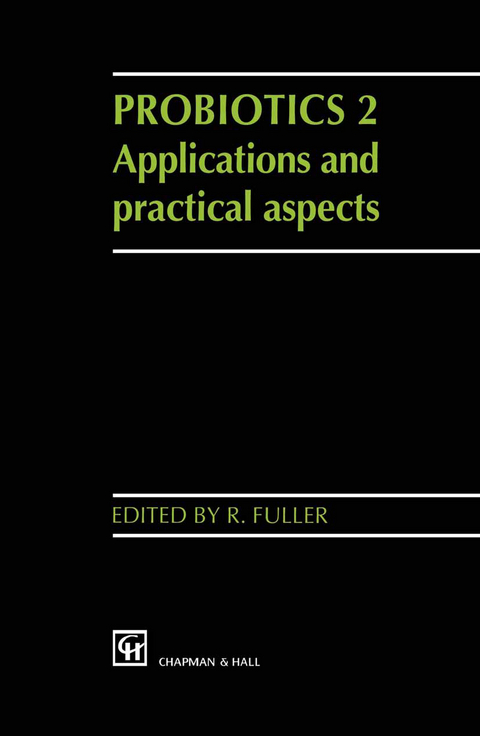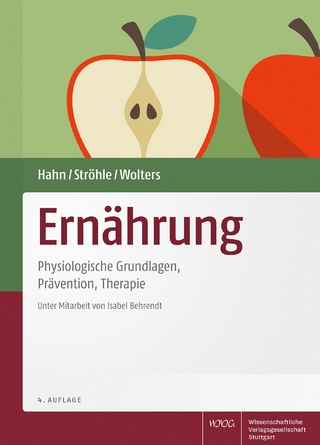
Probiotics 2
Springer (Verlag)
978-94-010-6476-7 (ISBN)
Roy Fuller is a private consultant in intestinal microecology, operating from Reading, UK
1 Introduction.- 1.1 Development of Commercial Preparations.- 1.2 Factors Affecting the Response.- 1.3 Future Developments.- 1.4 Conclusions.- 1.5 References.- 2 Probiotics and Intestinal Infections.- 2.1 Introduction.- 2.2 Human Colonic Microbiota and Homeostasis.- 2.3 Infections of the Intestinal Tract.- 2.4 Attachment.- 2.5 Use of Probiotics against Intestinal Infections.- 2.6 Probiotics and Viral Infections of the Gastrointestinal Tract.- 2.7 Modulation of the Host Response to Infection.- 2.8 Effects of Probiotics in Infants.- 2.9 Prebiotics and Synbiotics.- 2.10 References.- 3 Antibiotic-Associated Diarrhoea: Treatments by Living Organisms given by the Oral Route (Probiotics).- 3.1 Introduction.- 3.2 Antibiotic-Associated Diarrhoea and Pseudomembranous Colitis.- 3.3 Treatments by Living Organisms.- 3.4 Search for New Oral Treatments by Probiotics.- 3.5 Acknowledgements.- 3.6 References.- 4 Lactose Maldigestion.- 4.1 Introduction.- 4.2 Lactose Metabolism.- 4.3 Methods to Study Lactose Digestion.- 4.4 Digestion and Tolerance of Fermented Dairy Products in Lactose-Intolerant Subjects.- 4.5 Mechanisms for the Better Tolerance and Digestion of Lactose from Fermented Dairy Products.- 4.6 Clinical Applications of Probiotics or Fermented Milks in the Field of Lactose Maldigestion or Intolerance.- 4.7 Comments and Conclusions.- 4.8 References.- 5 Antimutagenic and Antitumour Activities of Lactic Acid Bacteria.- 5.1 Introduction.- 5.2 Antimutagenic Activity of Lactic Acid Bacteria.- 5.3 Antitumour Activity of Lactic Acid Bacteria.- 5.4 References.- 6 Stimulation of Immunity by Probiotics.- 6.1 Introduction.- 6.2 Microflora, Probiotics and Immunity.- 6.3 Endogenous Microflora.- 6.4 Morphology of Gut-Associated Lymphoid Tissue.- 6.5 Intra-Epithelial Lymphocyte Compartment.- 6.6 Lamina Propria Lymphocyte Compartment.- 6.7 Antigen Presentation in the Gut.- 6.8 Effector Response in the Gut.- 6.9 Modulation of Gut Functions by Immune Networks.- 6.10 Modulation of Cytokine Production by Probiotics.- 6.11 Modulation of Gut-Associated Lymphoid Tissue by Probiotics.- 6.12 Modulation of Macrophage Functions by Probiotics.- 6.13 Modulation of Resistance towards Salmonella Typhimurium by Probiotics.- 6.14 Modulation of Autoimmunity by Probiotics.- 6.15 Role of Probiotics in the Treatment of Human Infections.- 6.16 Pathogenic Potential of Probiotics.- 6.17 References.- 7 Probiotics in Cattle.- 7.1 Introduction.- 7.2 Baby Calves.- 7.3 Beef Cattle.- 7.4 Lactating Cows.- 7.5 Market Penetration of Probiotics.- 7.6 How do Probiotics Work in Cattle?.- 7.7 Conclusions.- 7.8 References.- 8 Intervention Strategies: The use of Probiotics and Competitive Exclusion Microfloras against Contamination with Pathogens in Pigs and Poultry.- 8.1 Introduction.- 8.2 Intestinal Flora and Gut Metabolism.- 8.3 Microflora and Colonization Resistance.- 8.4 Use of Probiotics.- 8.5 Use of Competitive Exclusion Microfloras in Poultry.- 8.6 Summary.- 8.7 References.
| Zusatzinfo | IX, 212 p. |
|---|---|
| Verlagsort | Dordrecht |
| Sprache | englisch |
| Maße | 155 x 235 mm |
| Themenwelt | Medizin / Pharmazie ► Gesundheitsfachberufe ► Diätassistenz / Ernährungsberatung |
| Naturwissenschaften ► Biologie ► Biochemie | |
| Naturwissenschaften ► Biologie ► Mikrobiologie / Immunologie | |
| Naturwissenschaften ► Biologie ► Zoologie | |
| Technik ► Umwelttechnik / Biotechnologie | |
| ISBN-10 | 94-010-6476-8 / 9401064768 |
| ISBN-13 | 978-94-010-6476-7 / 9789401064767 |
| Zustand | Neuware |
| Haben Sie eine Frage zum Produkt? |
aus dem Bereich


